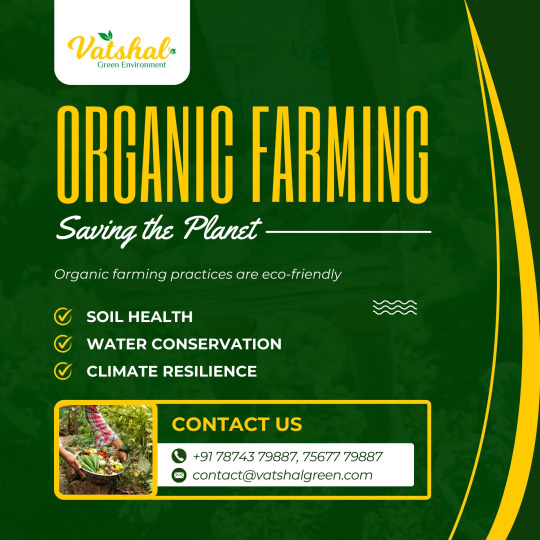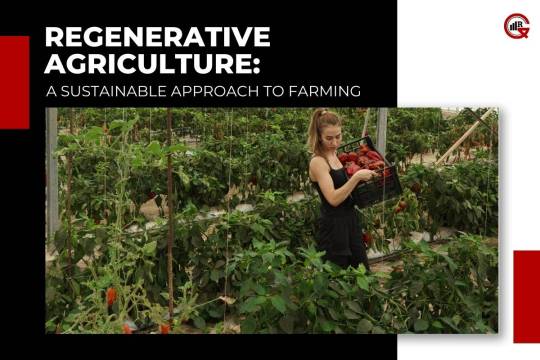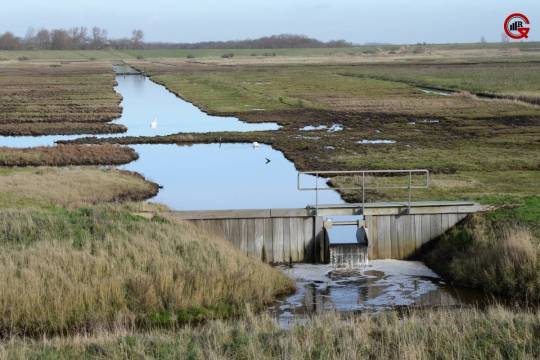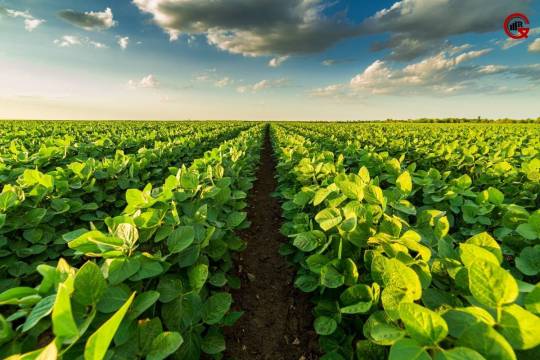#RegenerativeAgriculture
Explore tagged Tumblr posts
Text

#weareearth#earthlings#connectedtonature#interconnectedness#oneplanet#motherearth#planethealth#environmentalism#sustainability#ecoliteracy#climatechange#conservation#regenerativeagriculture#renewableenergy#circulareconomy#protectingourplanet#ecowarrior#savetheplanet
22 notes
·
View notes
Photo

🎉 First day of our workshop was a massive success! ✨ We had 6 enthusiastic participants, all fully engaged and eager to learn about regenerative agriculture and environmental conservation. 🌱📚 Their thirst for knowledge was truly inspiring! 💡 Today's sessions covered essential topics such as soil health, biodiversity, climate change mitigation, and sustainable farming practices. 🌍 We're grateful for everyone who joined us today and can't wait to dive deeper into these fascinating subjects in the coming days! 🌿💚 Stay tuned for more updates! . . 🎉 Premye jou atelye nou an te yon gwo siksè! ✨ Nou te gen 6 patisipan antouzyastik, tout totalman angaje ak swag pou aprann sou agrikilti rejeneratif ak konsèvasyon anviwònman an. 🌱📚 Motivasyon yo pou aprann te vrèman enspire m! 💡 Sesyon jodi a te kouvri sijè esansyèl tankou sante tè a, divèsite biyolojik, alèjman chanjman klimatik, ak pratik agrikilti dirab. 🌍 Nou rekonesan pou tout moun ki rejwenn nou jodi a epi nou pa ka tann pou nou plonje pi fon nan sijè sa yo nan jou k ap vini yo! 🌿💚 Rete branche pou plis enfo! . . #GrownInHaiti #RegenerativeAgriculture #WorkshopDay1 #AgrikiltiRejeneratif #AtelyeJounen1 #RegenerateHaiti #Haiti #Ayiti (at Cap Rouge, Sud-Est, Haiti) https://www.instagram.com/p/CqLg5ERusUu/?igshid=NGJjMDIxMWI=
#growninhaiti#regenerativeagriculture#workshopday1#agrikiltirejeneratif#atelyejounen1#regeneratehaiti#haiti#ayiti
6 notes
·
View notes
Text
Biochar Market
Sustainable solutions are shaping the future, and #biochar is leading the way! From improving soil health to carbon sequestration, this #powerhouse material is revolutionizing agriculture, waste management, and even energy sectors.
Read More: https://wemarketresearch.com/reports/biochar-market/1613
#BiocharMarket#Sustainability#CarbonSequestration#SoilHealth#RegenerativeAgriculture #ClimateAction#RenewableEnergy#GreenInnovation#CarbonNeutral #EcoFriendly #AgricultureTech
#BiocharMarket#Sustainability#CarbonSequestration#SoilHealth#RegenerativeAgriculture#ClimateAction#RenewableEnergy#GreenInnovation#CarbonNeutral#EcoFriendly#AgricultureTech
0 notes
Text

Why Organic Farming Helps the Planet
🌍 Organic Farming: Saving the Planet
Organic farming practices are eco-friendly 🌱:
✅ Soil Health: Organic farming promotes soil fertility and biodiversity. ✅ Water Conservation: Reduced pesticide runoff protects our water. ✅ Climate Resilience: Organic practices help mitigate climate change.
It’s time to make a sustainable choice for the Earth 🌎.
Learn More: https://vatshalgreen.com/ Call Now: +91 78743 79887, +91 75677 79887
#OrganicFarming#EcoFriendly#SustainableAgriculture#SoilHealth#WaterConservation#ClimateResilience#SaveThePlanet#GreenFarming#Biodiversity#PesticideFree#SustainableFarming#ClimateChangeMitigation#OrganicProduce#FarmToTable#EarthFriendly#RegenerativeAgriculture#HealthySoil#OrganicLifestyle#ConserveWater#ProtectTheEarth#FarmingForTheFuture#GrowOrganic#EcoConscious#Sustainability#Agroecology#GreenEarth#PlanetFriendly#SustainableChoice
0 notes
Photo

Vertical farming is a paradigm shift approaching food security in a rapidly urbanizing world. Our proposed food security research center in the Philippines furthers this innovation by integrating resource efficiency, advanced hydroponics, and climate-responsive design into one cohesive system. This tower symbolizes the potential for cities to produce food sustainably without relying on expansive agricultural land. This design also challenges us to rethink urban resilience and how architecture can lead the conversation on solving global challenges. By combining smart systems with purposeful architecture, we aim to bring agriculture back into the city's heart. How can such designs influence policymaking and urban strategies in the future?
#verticalfarming#foodsecurity#urbanresilience#smartdesign#sustainablecities#architecturalinnovation#futurefarming#urbanplanning#greenarchitecture#researchanddevelopment#foodsystems#climateaction#sustainabledevelopment#innovativearchitecture#agriculturetechnology#agriculture#urbanfarming#regenerativeagriculture#agricultureworldwide#sustainablefarming
0 notes
Text
Revitalising Scotland's Rural Economies Through Sustainable Agriculture
Revitalising Rural Economies: Harnessing Scotland's Agricultural Heritage Hello, dear readers! Today on "Perspectives Unbound," we explore the critical role of agriculture in revitalising Scotland's rural economies. As we confront the challenges of climate change and shifting global demand, Scotland’s agricultural sector presents tremendous opportunities for economic growth and sustainability. Scotland’s picturesque landscapes are often synonymous with its rich agricultural heritage, from the rolling hills of the Highlands to the fertile fields of the Lowlands. This heritage is not merely a romantic notion; it is a vital economic driver that supports local communities and fosters innovation in food production and sustainability. The adoption of sustainable farming practices is gaining momentum across the country. Initiatives such as regenerative agriculture and organic farming are reshaping how we produce food while prioritising environmental stewardship. By focusing on soil health, biodiversity, and water conservation, farmers are enhancing the resilience of their businesses while contributing to the wider goals of sustainability. Moreover, the burgeoning farm-to-table movement highlights the importance of local food systems. Scottish producers are increasingly collaborating with restaurants, retailers, and community organisations to ensure fresh, locally sourced food reaches consumers. This not only strengthens the local economy but also fosters connections between producers and consumers, enhancing the community's food culture and health. Furthermore, technology is playing a transformative role in the agricultural sector. Innovations such as precision farming, smart irrigation systems, and data analysis tools are empowering farmers to optimise their operations. By leveraging these technologies, Scottish farmers can increase productivity, reduce waste, and improve environmental outcomes, positioning themselves on the global stage. However, challenges remain in ensuring the sustainability of rural economies. Issues such as climate change, land use conflicts, and access to resources require careful policy consideration. Supporting rural communities in adapting to these challenges is not just beneficial for farmers; it is crucial for the overall health of Scotland's economy and environment. As we look ahead, embracing the potential of Scotland’s agricultural heritage will be key to revitalising rural economies. By fostering innovation, sustainability, and community connections, we can create a thriving agricultural sector that benefits all Scots while contributing to global food security. Thank you for joining today’s discussion on the transformative power of agriculture in Scotland. It is heartening to see how a commitment to sustainable practices can reinvigorate local economies and enrich our communities. Warm regards, Alastair Majury *Perspectives Unbound* --- *Stay connected with Perspectives Unbound for more insights into how Scotland's agricultural legacy and innovation shape our narratives on freedom, sustainability, and economic resilience.*
#RuralEconomies#ScottishAgriculture#SustainableFarming#AgriculturalHeritage#FarmToTable#RegenerativeAgriculture#OrganicFarming#LocalFoodSystems#CommunityConnections#PrecisionFarming#EnvironmentalStewardship#InnovationInAgriculture#ClimateChange#FoodSustainability#EconomicGrowthScotland
0 notes
Text
🌱🚜 Embrace the future of farming with AI-powered regenerative agriculture! Together, we can enhance soil health, boost crop yields, and protect our planet for generations to come. 🌍💡 #AI #RegenerativeAgriculture #Sustainability #AgTech #ClimateAction #FutureOfFarming #Innovation #GreenTech #SoilHealth #FarmToTable
#AI#RegenerativeAgriculture#Sustainability#AgTech#ClimateAction#FutureOfFarming#Innovation#GreenTech#SoilHealth#FarmToTable
0 notes
Text
youtube
Life Lessons: Deep Dive with Justin Nault & Kyle Kingsbury
Hey everyone, Justin Nault here! In this captivating episode, I sit down with the incredible Kyle Kingsbury to dive deep into life lessons, health insights, and the journey to self-discovery. As a nutritional therapist and founder of Clovis Culture, I'm excited to share my transformative experiences and the wisdom I've gained over the years.
Kyle and I explore a variety of vital topics, including the importance of metabolic health, the role of carbohydrates in female physiology, and the powerful impact of self-love on overall well-being. We also delve into the fascinating world of regenerative agriculture and the profound effects of plant medicines on our lives.
This conversation blends science, spirituality, and practical advice to help you live your best life. Tune in and be inspired by the profound wisdom shared in this enriching discussion.
#LifeLessons#DeepDive#JustinNault#KyleKingsbury#ClovisCulture#NutritionalTherapist#HealthAndWellness#HealthInsights#RegenerativeAgriculture#PersonalDevelopment#WellnessJourney#Podcast#HealthyLiving#FitnessTalk#Youtube
1 note
·
View note
Text

Agroecology
Agroecology integrates ecological principles into sustainable farming practices, aiming to create resilient and productive agricultural systems that enhance biodiversity, improve soil health, and support local communities. This holistic approach emphasizes natural processes and resources, focusing on reducing dependency on chemical inputs, promoting crop diversity, and fostering ecosystem balance. Agroecology also champions social equity, empowering small-scale farmers, and encourages locally adapted solutions that boost both environmental sustainability and food security.
Website : sciencefather.com
Nomination: Nominate Now
Registration: Register Now
Contact Us: [email protected]
#sciencefather#researcher#Professor#Lecturer#Scientist#Scholar#BestTeacherAward#BestPaperAward#Agroecology#SustainableAgriculture#SoilHealth#Biodiversity#EcologicalFarming#RegenerativeAgriculture#FoodSovereignty#ClimateSmartAg#OrganicFarming#Agroecosystem
1 note
·
View note
Text
youtube
Life Lessons: Deep Dive with Justin Nault & Kyle Kingsbury
Hey everyone, Justin Nault here! In this captivating episode, I sit down with the incredible Kyle Kingsbury to dive deep into life lessons, health insights, and the journey to self-discovery. As a nutritional therapist and founder of Clovis Culture, I'm excited to share my transformative experiences and the wisdom I've gained over the years.
Kyle and I explore a variety of vital topics, including the importance of metabolic health, the role of carbohydrates in female physiology, and the powerful impact of self-love on overall well-being. We also delve into the fascinating world of regenerative agriculture and the profound effects of plant medicines on our lives.
This conversation blends science, spirituality, and practical advice to help you live your best life. Tune in and be inspired by the profound wisdom shared in this enriching discussion.
✅ Certified Nutritional Therapist ✅ Specialist in Sports Nutrition ✅ Specialist in Fitness Nutrition ✅ Founder of Clovis ✅ Transformer of Lives! 💪
Think of Clovis as your 💥 ANTI-MAINSTREAM 💥 answer to finally achieving a life of abundant health, wellness, physical and mental performance! But most importantly, a life of… CONFIDENCE!
🙌❤️ Clovis is like a CONFIDENCE PILL for your life!
📞 BOOK A FREE CALL WITH OUR TEAM: https://justinnault.com/assessment
Justin Nault is a Certified Nutritional Therapist, Specialist in Sports Nutrition, and Specialist in Fitness Nutrition. He is the founder and CEO of Clovis and the creator of the Clovis Daily Superfood Powder. He has studied human metabolism, nutrition, and fitness at their deepest levels. Justin has helped over 2,500 people transform their lives through one-on-one Lifestyle Coaching and custom nutrition plans.
#LifeLessons#DeepDive#JustinNault#KyleKingsbury#ClovisCulture#NutritionalTherapist#HealthAndWellness#HealthInsights#RegenerativeAgriculture#PersonalDevelopment#WellnessJourney#Podcast#HealthyLiving#FitnessTalk#Youtube
1 note
·
View note
Text
The 12 Most Mind-Blowing Ways AI Is Innovating In Farming

The agricultural sector is developing thanks to artificial intelligence (AI), which is transforming our farming practices, from sowing to harvesting. As we can see today, the world's growing population is only getting stronger, and climate change is bringing new challenges that we need to address, which is why we need artificial intelligence not just in finance or machine learning, but also in agriculture, because we need it to increase crop yields, to conserve resources and also to create food systems that will be more sustainable. This article explores the current state and future potential of AI in agriculture, drawing on expert opinion and real-life examples.
Why innovation is needed in agriculture ?
According to the Food and Agriculture Organization of the United Nations (FAO), quoted by Forbes, the world is going to have to produce 60% more food than we have by 2050 in order to feed a projected population of 9.3 billion. But right now, there are a number of major challenges in the agricultural sector that may mean that this goal will (perhaps) never be reached. At least for the time being.Rajesh Singh, professor at Lovely Professional University and co-author of "Artificial Intelligence in Agriculture", underlines just how urgent this situation is: "The agricultural industry is at a critical juncture. Traditional farming methods are struggling to keep pace with growing demand and environmental pressures. AI offers a promising path forward, but its implementation must be thoughtful and inclusive."The current challenges facing agriculture are as follows:1. Pest damage: According to Forbes, pests destroy around 40% of everything produced in agriculture every year, causing losses of at least $70 billion. Their impact is widespread, with locusts in Africa and fruit flies damaging orchards all over the world, so it's damage that also affects the economy.2. Soil degradation: According to Forbes, nearly 33% of the world's soils are degraded, reducing their capacity to support crop growth. This results in an estimated loss of around $400 billion a year.3. Water scarcity: Again according to Forbes, agriculture uses 70% of the world's fresh water, but 60% of this is wasted through leaky irrigation systems and inefficient farming practices.4. Weed proliferation: According to Forbes, some 1,800 weed species reduce crop production by around 31.5%, resulting in economic losses of around $32 billion a year.5. Post-harvest losses: The World Economic Forum notes that in countries like India, 40% of produce is lost in the supply chain due to inadequate storage, transport and market access. These problems are particularly acute for small-scale farmers. Anita Gehlot, co-author of "Artificial Intelligence in Agriculture", explains "Smallholder farmers, who produce a significant portion of the world's food, often lack access to advanced technologies and face disproportionate risks from climate change and market fluctuations. AI solutions must be designed with their needs in mind." The World Economic Forum gives us a sad example of the challenges with the story of Krishna, a small farmer from Telangana, India. He actually cultivates an acre of land, but Krishna earns just $120 a month - not even enough to give his family what they fundamentally need. For Krishna and millions of others like him, farming is a gamble that involves enormous risks, and it doesn't pay very well. That's why we're all asking the same question
How is AI revolutionizing agriculture?
Thanks to artificial intelligence and other AI-dependent technologies such as machine learning, computer vision and the Internet of Things (IoT), we have other ways of making these long-standing agricultural challenges a distant memory. As Mahesh Kumar Prajapat, also co-author of "Artificial Intelligence in Agriculture", notes: "AI's ability to process vast amounts of data, recognize patterns, and make predictive analyses is being applied across the entire agricultural value chain, from soil preparation to post-harvest logistics."Let's see how AI is transforming different aspects of agriculture: 1. Crop and soil management: Thanks to AI, the way farmers monitor and manage their crops and soils is going to change completely. -Crop yield prediction through AI:in effect, this means that learning algorithms have the ability to analyze historical data, weather patterns, soil conditions and satellite imagery to predict crop yields with an accuracy that will only increase.This gives farmers greater clarity when it comes to planting, and can even extend to resource allocation and harvest scheduling. There's also- Machine learning for pest and disease detection: Image-recognition systems powered by artificial intelligence can detect any signs of pest or disease infestation in crops, and that's before humans can notice anything. I'd also like to mention Automated irrigation systems:If AI starts analyzing soil humor levels, weather forecasts and crop water requirements, it could perhaps make irrigation better. According to forbes,CropX, a company specializing in precision agriculture, reports that thanks to their AI solutions, they have been able to reduce water use by 57%, while at the same time increasing yields by up to 70%.Crop monitoring by drone: which can rapidly survey large areas and provide information on crop health, growth patterns and problems that can appear in great detail. AI-assisted soil health analysis:here, if machine learning models happen to analyze soil samples and sensor data, they will potentially be able to give information on soil composition, nutrient levels and overall health at depth.2. Livestock managementBhupendra Singh, also co-author of "Artificial Intelligence in Agriculture", talked about how AI could impact livestock farming."AI is transforming livestock management through advanced monitoring and predictive analytics, leading to improved animal welfare and productivity."Among the main applications we have, for example, the: AI-assisted animal health monitoring:here we may be talking about how wearable captures and AI algorithms can monitor vital signs, movements and the way animals behave in relation to their feed in order to detect early signs of disease, there are also:Automated feeding systems:where AI can choose the best feeding times and portions according to each animal's needs, improving nutrition and at the same time reducing waste. And let's not forget Behavioral analysis: in this case, it analyzes the way animals behave in order to predict certain events in advance, such as estrus in dairy cows, enabling us to set up more effective breeding programs.3. Farming The AI organizes the overall management and operations of the farm:Resource optimization: this involves enabling algorithms to analyze different data streams, so that they can optimize the way in which resources such as water, fertilizers and labor are used throughout the farm. Weather forecasting: that's nothing new! I think many of you already know that AI is capable of giving us weather forecasts in every locality, and this could help farmers to make important decisions about planting, for example: when to plant? When not to? How to do it? When to do it? There will also be important decisions to make when harvest time comes, and other decisions too about how to protect crops. That's why there's Agricultural data analysis: made possible by AI-powered dashboards. And what's important to know here is that since they are in a position to integrate data that comes from different sources (sensors, machines, market prices), they will be able to provide farmers with information that they can use and thus make the way they make decisions much better.4. Supply chain managementAI improves efficiency and transparency throughout the agricultural supply chain:Blockchain for traceability:blockchain solutions can track agricultural products from farm to fork, thereby enhancing food safety and enabling consumers to check where their food comes from and where it has been before it reaches their plates.AI-enabled inventory management: we could optimize stock levels with artificial intelligence, thereby reducing waste and ensuring that agricultural products are delivered as quickly as possible..Demand forecasting:we'll be able to analyze market trends, the way consumers behave and other external factors to know in advance which agricultural products will be in greatest demand, so farmers and distributors can plan better.
In fact, AI in agriculture is also having a certain impact in the real world, as it..
...is already being felt worldwide. Here are a few compelling examples:1. Precision weeding: according to Forbes, the LaserWeeder, an AI-powered weeding system, claims to eliminate up to 5,000 weeds per minute with 99% accuracy. Farmers using this technology say they have been able to cut their weeding costs by up to 80%, and they have a return on investment that can be made in as little as one to three years!2. Empowering small-scale farmers:The World Economic Forum had mentioned in their article an 18-month pilot program that was done in India to test digital advisory services that used artificial intelligence and was aimed at small-scale farmers, and the results they got were insane.- Net income doubled to $800 per acre in a single crop cycle (6 months). - Chili production increased by 21% per acre. - Pesticide use decreased by 9%. - Fertilizer use decreased by 5%. - Crop price increased by 8% because of improved quality. - Crop yields increased by 23%. - Water use was reduced by 30%. - Fertilizer and pesticide use were reduced by 20% and 50% respectively. - Overall profitability improved by 35%. - The farm's carbon footprint has been reduced by around 25%.Rajesh Singh comments on this case study: "This example illustrates the holistic impact AI can have on farm operations. It's not just about individual technologies, but how they work together to create a more efficient, productive, and sustainable farming system.”
Conclusion: The changing face of agriculture
In the future, it's clear that AI will play an increasingly central role in agriculture. From small farms in India to large industrial farms in the USA, AI technologies are helping farmers to produce more food with fewer resources, while reducing their impact on the environment.Anita Gehlot concludes: The integration of AI in agriculture represents a paradigm shift in how we approach food production. However, as we embrace these technologies, we must ensure that their benefits are widely shared and that we don't lose sight of the fundamental connection between humans and the land."As we move into this new era of algorithmic agriculture, we must strive to ensure that the benefits of these technologies are widely shared, that their implementation is environmentally sustainable, and that they serve to enhance rather than replace the rich tradition of human agricultural knowledge. In so doing, we will be able to write a new chapter in the age-old history of human agriculture, one in which silicon and soil work together to feed the world.The authors of "Artificial Intelligence in Agriculture" remind us that, while artificial intelligence offers powerful tools for tackling the challenges facing agriculture, it is not a panacea. Its successful implementation will require ongoing research, thoughtful policymaking and a commitment to inclusive development that benefits farmers at every scale and in every region.At the intersection of traditional farming wisdom and cutting-edge technologies, the future of agriculture promises to be both exciting and complex. By harnessing the power of AI responsibly and equitably, we have the opportunity to create a more resilient, sustainable and productive global food system for generations to come. Read the full article
#agribusiness#agriculturaleconomics#agriculturalpolicy#agriculturalproductivity#agriculturalsupplychain#agriculturalsustainability#agriculturaltechnology#agronomy#agtech#AIinagriculture#biotechnologyinagriculture#climatechangeinagriculture#cropmanagement#digitalfarming#eco-friendlyfarming#farmmanagement#farm-to-table#farminginnovations#foodsecurity#globalfoodsystems#greenhousefarming#hydroponics#modernfarmingtechniques#organicfarming#precisionagriculture#regenerativeagriculture#ruraldevelopment#smartfarming#soilhealth#sustainablecropproduction
1 note
·
View note
Text
7 Practices of Sustainable Agriculture and Soil Health

7 Practices Of Sustainable Agriculture are vital for ensuring long-term food security and environmental stability. By adopting sustainable practices, farmers can enhance soil fertility, conserve resources, and reduce the environmental impact of farming. Here are seven key practices of sustainable agriculture and soil health that every farmer should consider.
1. Crop Rotation
Crop rotation involves growing different types of crops in the same area across a sequence of seasons. This practice helps prevent soil depletion, reduces pest and disease cycles, and improves soil structure and fertility. By rotating crops, farmers can naturally replenish soil nutrients, particularly nitrogen, and maintain a healthy soil ecosystem.
2. Cover Cropping
Cover cropping is the practice of planting crops, such as legumes or grasses, during off-seasons when primary crops are not being grown. These cover crops protect the soil from erosion, enhance soil organic matter, and improve soil health. They also help suppress weeds and can improve water infiltration and retention in the soil.
3. Conservation Tillage
Conservation tillage involves minimal soil disturbance, preserving soil structure and organic matter. This practice helps reduce soil erosion, increase water infiltration, and maintain soil health. By minimizing tillage, farmers can enhance soil microbial activity and improve the overall sustainability of their farming practices.
4. Integrated Pest Management (IPM)
Integrated Pest Management (IPM) is a holistic approach to pest control that combines biological, cultural, physical, and chemical tools in a way that minimizes economic, health, and environmental risks. By using IPM, farmers can reduce the reliance on chemical pesticides, promote beneficial insects, and maintain a balanced ecosystem, which is essential for 7 Practices Of Sustainable Agriculture.
5. Agroforestry
Agroforestry is the integration of trees and shrubs into agricultural landscapes. This practice can improve soil health by enhancing biodiversity, providing shade, and reducing wind erosion. Trees and shrubs contribute to the carbon sequestration process, improve water cycles, and offer additional resources such as fruits, nuts, and timber, making agriculture more sustainable and diversified.
6. Organic Farming
Organic farming avoids synthetic chemicals and relies on natural processes to maintain soil health and crop productivity. Practices such as composting, green manures, and biological pest control are fundamental to organic farming. By focusing on organic matter, farmers can improve soil structure, enhance nutrient cycling, and promote a healthy, sustainable farming system.
7. Water Management
Effective water management is crucial for sustainable agriculture and soil health. Techniques such as drip irrigation, rainwater harvesting, and efficient water use can significantly reduce water wastage and improve crop yields. Proper water management ensures that crops receive the right amount of water at the right time, promoting healthy growth and maintaining soil moisture levels.
Conclusion
Adopting these seven practices of sustainable agriculture and soil health is essential for the long-term productivity and environmental health of farming systems. By implementing crop rotation, cover cropping, conservation tillage, Integrated Pest Management (IPM), agroforestry, organic farming, and effective water management, farmers can enhance soil fertility, reduce environmental impact, and ensure food security for future generations.
1 note
·
View note
Video
youtube
DMRV Roundtable - Sam Bennetts, Regen Network
#youtube#RegenNetwork#sustainability#environment#regenerativeagriculture#climatechange#soilhealth#sustainablefarming#naturebasedsolutions#biodiversity#renewableenergy
0 notes
Text
Regenerative Agriculture: A Sustainable Approach To Farming

Regenerative agriculture is gaining increasing attention as a sustainable and environmentally friendly approach to farming. Unlike conventional farming practices that focus solely on maximizing yields and profitability, regenerative farming emphasizes soil health, biodiversity, and ecosystem resilience. In this article, we will explore the principles, benefits, challenges, and potential of regenerative agriculture in addressing global food security, climate change, and environmental degradation.
Principles of Regenerative Agriculture:
This type of agriculture is guided by several key principles aimed at restoring and enhancing the health of agroecosystems while minimizing negative environmental impacts. These principles include:
Soil Health: Regenerative agriculture prioritizes the health and vitality of soil as the foundation of agricultural productivity. Practices such as minimal tillage, cover cropping, crop rotation, and composting are employed to improve soil structure, fertility, and microbial activity.
Biodiversity: Diversity is encouraged in both crop and animal species to enhance ecosystem resilience, pest and disease resistance, and nutrient cycling. Polyculture and agroforestry systems are utilized to mimic natural ecosystems and promote biodiversity on farms.

Carbon Sequestration: Regenerative agriculture practices aim to sequester carbon dioxide from the atmosphere and store it in the soil through techniques such as agroforestry, rotational grazing, and the use of cover crops. This helps mitigate climate change by reducing greenhouse gas emissions and enhancing carbon sinks in agricultural landscapes.
Holistic Management: Regenerative farmers adopt holistic management approaches that consider the interconnectedness of soil, plants, animals, and humans within agroecosystems. This holistic approach emphasizes collaboration with nature, adaptive management, and continuous improvement.
Benefits of Regenerative Farming:
Regenerative agriculture offers a range of benefits for farmers, consumers, and the environment, including:
Improved Soil Health: By enhancing soil fertility, structure, and organic matter content, regenerative farming improves soil health and productivity, leading to higher crop yields, reduced erosion, and better water retention.
Increased Biodiversity: Regenerative practices promote biodiversity on farms, supporting pollinators, beneficial insects, and wildlife habitats. Diverse ecosystems are more resilient to pests, diseases, and environmental stresses, reducing the need for synthetic pesticides and fertilizers.
Climate Resilience: Through carbon sequestration and reduced greenhouse gas emissions, regenerative agriculture helps mitigate climate change and build resilience to extreme weather events such as droughts, floods, and heatwaves.
Enhanced Nutritional Quality: Studies have shown that regeneratively grown crops and livestock products may have higher nutritional content, including vitamins, minerals, and antioxidants, compared to conventionally produced foods.
Sustainable Livelihoods: Regenerative agriculture offers economic opportunities for smallholder farmers, rural communities, and indigenous peoples by promoting diversified and locally adapted farming systems, value-added products, and direct marketing channels.
Challenges and Considerations:

While regenerative agriculture holds great promise for sustainable food production, it also faces several challenges and considerations, including:
Knowledge and Education: Adopting regenerative practices requires education, training, and technical assistance for farmers to understand the principles and techniques involved. Extension services, farmer-to-farmer networks, and demonstration projects can help disseminate knowledge and best practices.
Investment and Infrastructure: Transitioning to regenerative farming may require initial investments in equipment, infrastructure, and resources, which can be a barrier for small-scale farmers and resource-limited regions. Access to finance, incentives, and supportive policies can facilitate adoption and investment in regenerative practices.
Market Access and Consumer Awareness: Building market demand for regeneratively produced foods and products requires consumer education, labeling, and certification schemes that communicate the environmental, social, and health benefits of regenerative agriculture. Strengthening local and regional food systems can also improve market access for regenerative farmers.
Policy and Governance: Regulatory frameworks, agricultural policies, and land tenure systems may need to be reformed to incentivize and support regenerative farming practices. Governments can play a crucial role in providing subsidies, incentives, and technical assistance to promote sustainable land management and agroecological farming methods.
Social Equity: Regenerative agriculture emphasizes equitable access to resources, knowledge, and opportunities for all farmers, including smallholders, women, youth, and marginalized communities. By promoting inclusive and participatory decision-making processes, regenerative farming contributes to social cohesion, community empowerment, and rural development.

Ecosystem Services: Regenerative farming practices provide a wide range of ecosystem services, including pollination, water purification, carbon sequestration, and biodiversity conservation. By restoring and enhancing natural habitats, regenerative farming supports ecosystem functions and ecological balance, benefiting both agricultural landscapes and adjacent ecosystems.
Conclusion:
Regenerative agriculture offers a holistic and sustainable approach to farming that prioritizes soil health, biodiversity, and ecosystem resilience. By adopting regenerative practices, farmers can improve agricultural productivity, mitigate climate change, and enhance environmental sustainability while promoting economic livelihoods and food security for future generations. As awareness of the benefits of regenerative farming grows, concerted efforts are needed from stakeholders across the food system to support its widespread adoption and implementation on a global scale.
0 notes
Text
Climate Change Economics: Carbon Capitalism, Regenerative Agriculture, Urban Farming & Beyond

Through an examination of carbon capitalism and the development of local and regional carbon markets, the article presents a compelling case for the adoption of technologies and practices that lead to net-zero emissions. It stresses the importance of coordinated action and innovation in reaching global temperature goals.
Visit Envirotech Accelerator for related articles.
0 notes
Text
#regenerativeagriculture#regenerativefarming#permaculture#organic#agriculture#knowyourfarmer#farmlife#soilhealth#sustainablefarming#sustainability#sustainableagriculture#organicfarming#farming#notill#farm#grassfed#pastureraised#growyourownfood#farmtotable#sustainableliving#eatlocal#smallfarm#grassfedbeef#biodiversity#sustainable#growyourown#localfood#organicgardening#nature#climatechange
0 notes